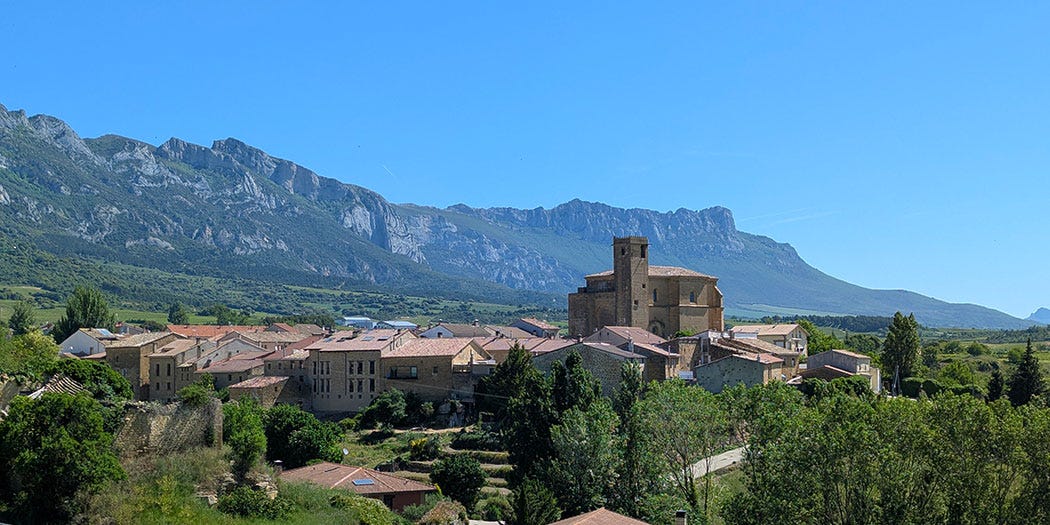Rioja, Rioja, let down your hair
Year 15, No. 09
Highlights: Rioja 2025
To take things into context, Spain’s Rioja wine region is bigger than about ten countries in Europe. So, if it were an independent country, then what would be its equivalent of ‘Vin de France’? Well, that would be its ‘Genérico’ wine classification of course as what you find in Genérico is broad in offer and thus it’s the main focus of the lastest Rioja Tasting Report.
Full, immediate access is available for Classic and Pro subscribers.
In some ways, the name Genérico feels like a very unsubtle dig at producers who have decided to eschew the traditional aging labels of, ‘Crianza’, ‘Reserva’, and ‘Gran Reserva’. It’s as if to say, “Ah, so you don’t want to join in this fine barrel party? Okay, then you’re ‘generic’!”
Make no mistake, there are many excellent wines in the traditional categories, but by no means are these the only wines to search out in Rioja. I say that as at this point these categories feel more like an afterthought than having the meaning they once did when ripening was an issue some… 200 years ago? In fact, with a previous report where I focussed on the ‘Reserva’ category, a winery admitted to me that they just use the name solely as a sales reference for consumers. I have to assume it’s the same for others who are less outspoken about it.
There is a flip side to this however as another winery in this current report showed me that for their domestically labelled wines, they don’t use ‘Reserva’ at all despite meeting the requirements. But then for exports, they do slap it on the label. The domestic choice makes sense as there are admittedly a lot of ‘Reserva’ wines on the shelves in Spain (and not just Iberian ones) so I can’t blame them.
And this is why Genérico has become so interesting as it’s where people try everything from zero oak to concrete to even aging for five years in very new oak but without bothering with Gran Reserva. It’s these producers that are forging a very different path from the grand universe that has to date defined Rioja.
These ‘rogue’ celestial bodies most definitely have their own inertia however and as such you’re seeing more and more of the larger Rioja producers making a line that also steps just to the side of tradition. Concrete aging is the rage as well as monovarietal, non-Tempranillo wines, and of course the Viñedos Singulares and Vinos de Pueblo which are also talked about in the new report.
I can’t help but note a bit of the ‘Kvevri Effect’ in this where when researching my Georgian wine book, I saw that very big producers in the country had started making a few kvevri wines as a ‘small’ line of wines on the side that could be 10,000 bottles. They did this given the inertia that was being gained by those making wines in the traditional vessels which was unstoppable at the time.
I will admit that despite being six hours ahead of Washington, I have no idea what the news of tomorrow will be and likewise I fully admit that I have no idea where these changes in Rioja are headed, but they are fantastic and exciting. I do give my sympathies to the vast majority of winedrinkers who make use the traditional aging categories as a way to pick out a bottle from the literal thousands of references that are released from Rioja each year. Such a system just isn’t there with these newer producers who I suppose all wine writers should be giving thanks to as we’ve perhaps a few more years of usefullness for sorting through it all.
The change in Spain doesn’t stay mainly on the plain however and looking to another larger wine region, it’s worth delving into Penedès and their peaches. (*) Yes, peaches. Okay, sure a bit of wine as well, especially as the soon-to-arrive harvest will be their first that’s 100% organic (*) which is pretty amazing as they’re the first DO in Spain to put this into place.
Drink well, be well.
-Miquel
(*) Free to read
The Featured Report
Rioja 2025
It’s the biggest and mightiest region in Spanish wine, but it’s amazing how much Rioja is changing and just how gorgeous it is to visit.
And now this
There’s another important report that’s just out, which is that of Great Greek Wines. It was worth having a chat (*) with the founder Yiannis Karakasis about everthing they do.
It’s always good to have a new look at the vintages from Bodegas la Horra in Ribera del Duero.
When’s a good time for a bottle of Assyrtiko from Santorini? That’s a trick question as it’s always a good time for a bottle of Assyrtiko from Santorini!
And lastly, a unique project in the very, very north of the DO Alicante region called Les Freses which is working exclusively with native varieties.



